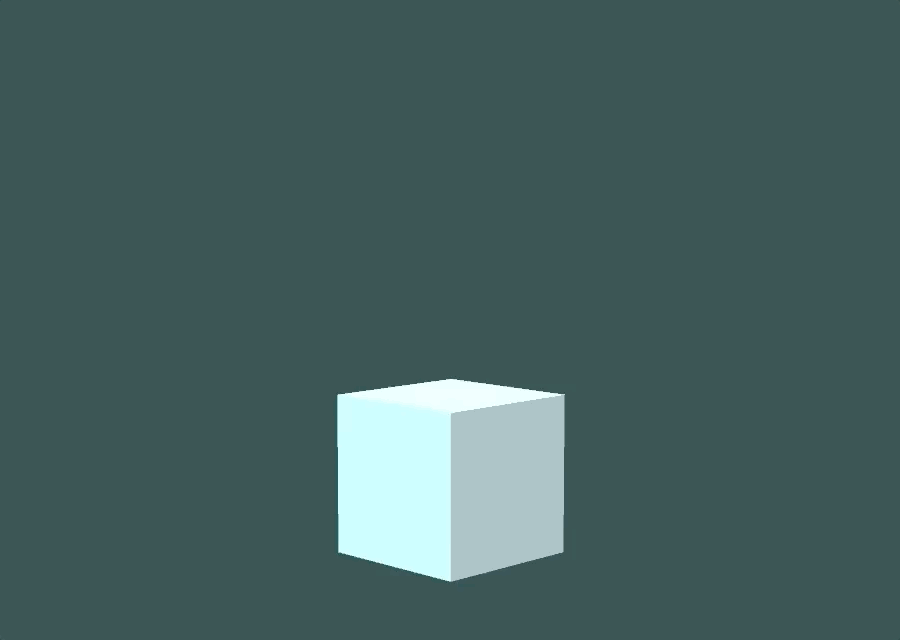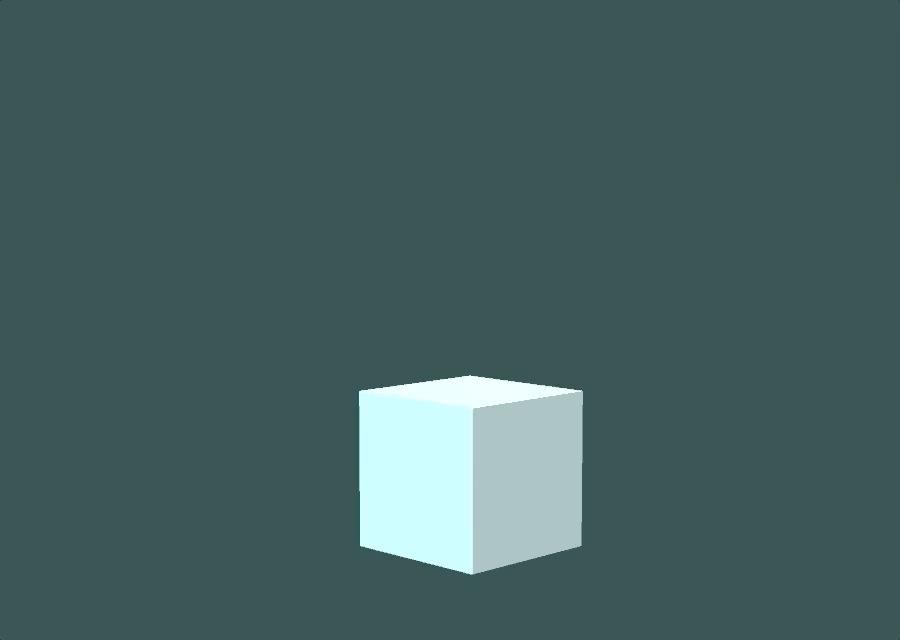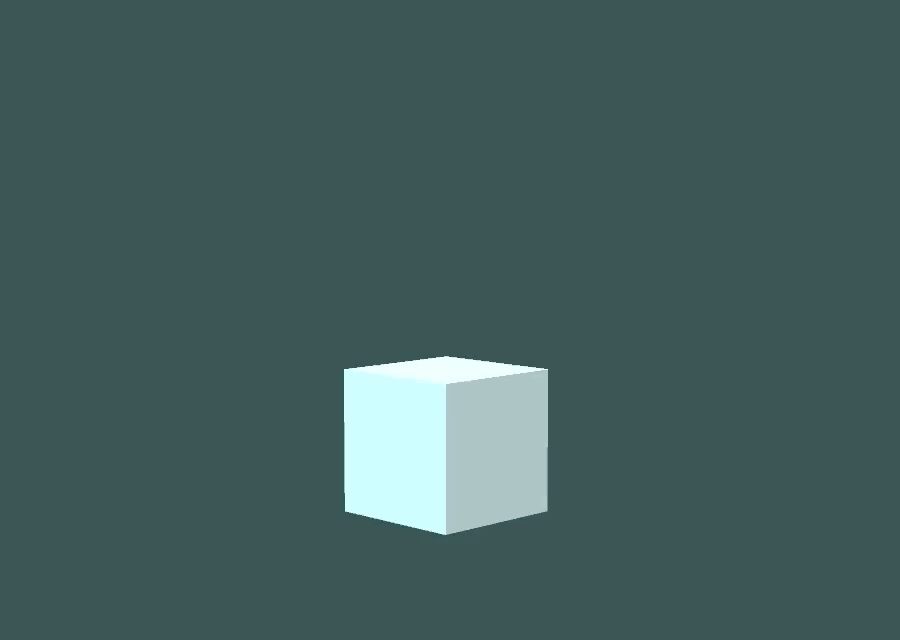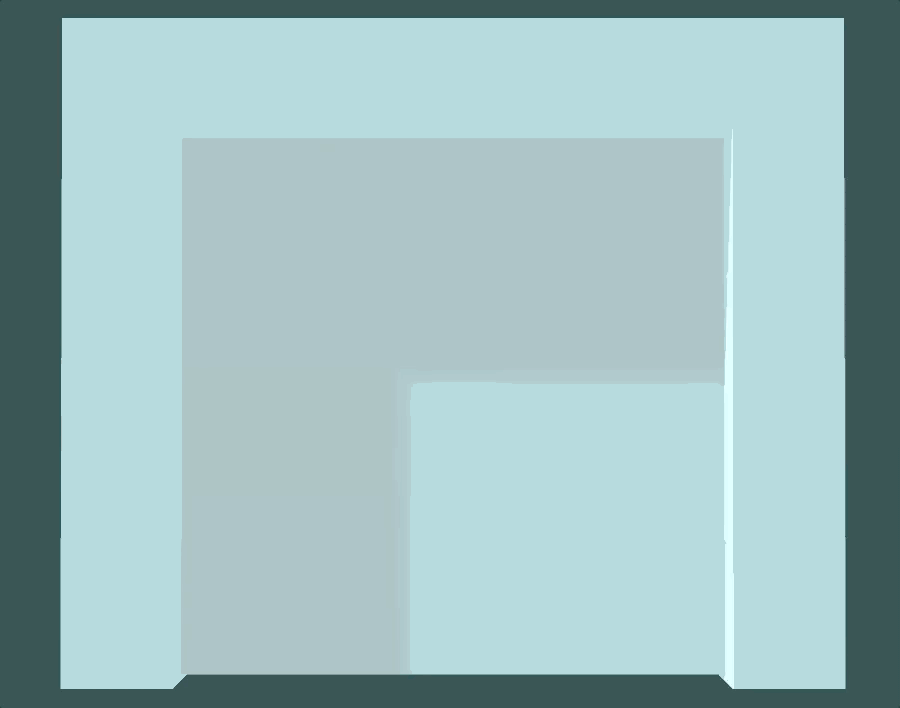Can You Move

Moving an object in Unity can be very straightforward.
It typically involves modifying the backdrop of an object'south Transform component, which is used to manage a game object'due south scale, rotation and position in the world.
However, there are many unlike ways you tin can exercise that…
And while most methods of moving an object in Unity involve modifying the object's Transform in some way, the exact method you apply will vary depending on the blazon of motion you want to create.
Only don't worry, because in this article, you'll learn how and when to use each of the dissimilar methods for moving an object in Unity, so that you lot tin employ the one that'southward right for your project.
Hither'southward what you'll detect on this page:
- How to movement an object in Unity
- How to use Transform Translate in Unity
- How to movement an object with the keyboard in Unity
- How to move an object, relative to the camera
- How to move an object to a position in Unity
- How to move an object to a position at a set speed (using Move Towards)
- How to move an object to a position in a prepare time (using Lerp)
- How to movement an object to a position using animation
- How to move an object using physics
Let's get started.
How to movement an object in Unity
The most straightforward method of changing an object'southward position in Unity is to set information technology directly, which will instantly move it to a new vector 3 position in the world.
This works by setting the Position property of an object's Transform component to a new position.
Like this:
// Moves an object to the gear up position transform.position = new Vector3(10, 0, 5); Or you can add a vector to an object'due south position, to movement it by a set amount in a specific management.
Similar this:
// Moves an object up 2 units transform.position += new Vector3(0, 2, 0); Which looks like this:

Adding a vector to an object's position moves information technology by that corporeality.
It's possible to alter the properties of an object's Transform from a script that's attached to it past using the Transform Property:
Transform myTransform = transform; The Transform property, which is typed with a lower example 't', allows you to reference the Transform component of an object from a script that'south attached to information technology, without getting a reference to it showtime.
Which is useful, as it allows y'all to easily reference, or change, an object'south own position from a script.
Like this:
Vector3 myPosition = transform.position; Modifying a Transform'due south position is the most straightforward method of creating movement in Unity.
Either by modifying it direct, over fourth dimension, or by using the Translate function which allows you to move an object in a specific direction.
How to use Transform Interpret in Unity
The Translate function in Unity moves an object by a set up amount, relative to its current position and orientation.
Like this:
void Start() { // Moves the object forward two units. transform.Translate(0,0,2); } This is unlike to simply calculation a vector to the object'due south position, which would move it relative to globe space, while Translate volition, by default, motility an object relative to its own local infinite.
This means that, when using Translate, passing in a forrard vector will motion the object in the management of its blue axis, the Z-Axis.
When information technology's called in one case, Translate moves an object past a ready amount once.
However, by calling it every frame, it'due south possible to create continuous move.
Like this:
void Update() { // Moves the object forward two units every frame. transform.Interpret(0,0,2); } Nevertheless, in that location'south a problem with this method.
Because framerates vary between devices and, because each frame ofttimes takes a dissimilar amount of time to process than the last, the speed of an object'due south movement would change depending on the framerate when moving an object in this way.
Instead, multiplying the motility amount past Time.deltaTime, which is the amount of time since the last frame, creates consequent movement that's measured in units per second.
Like this:
void Update() { // Moves the object forward at 2 units per 2d. transform.position = new Vector3(0,0,2) * Fourth dimension.deltaTime; } Which looks like this:

Calculation a scaled vector over time creates movement.
This works fine, all the same, it tin sometimes exist more user-friendly to manage movement direction and speed separately, by using a Unit of measurement Vector to determine the direction and a separate float value to control the speed.
Like this:
public float speed = 2; void Update() { // Moves the object forward at two units per 2d. transform.Translate(Vector3.forward * speed * Fourth dimension.deltaTime); } This has the same effect as manually typing out the vector, except that the speed is now dissever and tin can easily be changed.
In this example, Vector3.forwards is autograph for (0,0,1) which is the forrard direction in world space.
Multiplying Vector3.forward by the speed value, in this case 2, creates the vector (0,0,2) which, when multiplied by Delta Time, creates a forward movement of ii units per second.
The event is the same equally when manually typing out the vector, except that the speed is at present dissever and can easily exist controlled.
Direction vectors in Unity
A normalised vector, or unit of measurement vector, in Unity is simply a vector with a length of one that describes a direction. For case the unit vector (0,0,one) describes the forward direction in earth space.
Normalised vectors can be extremely useful for calculating distance and speed.
For instance, you lot could multiply a unit of measurement vector by 10 to get a position that's ten units away in a certain direction.
Or you lot can multiply a vector by a speed value and past Delta Time to create motility at an verbal speed in units per 2nd.
While you can type unit vectors manually, you'll find a number of shorthand expressions for common directional vectors in the Vector 3 class.
For case:
Vector3.forward // (0, 0, 1) Vector3.back // (0, 0, -1) Vector3.upwardly // (0, ane, 0) Vector3.down // (0, -1, 0) Vector3.correct // (1, 0, 0) Vector3.left // (-ane, 0, 0) These relate to common directions in world space, even so, it's also possible to get a normalised direction vector relative to an object'due south local position and rotation.
Like this:
transform.forrard // object forrard -transform.forward // object back transform.up // object up -transform.up // object down transform.correct // object right -transform.right // object left These can be extremely useful for creating object relative movement.
Such as moving an object frontward in the direction that it's facing.
Similar this:
public bladder speed = 2; void Update() { // Moves an object forward, relative to its ain rotation. transform.position += transform.forward * speed * Fourth dimension.deltaTime; } In this case, the object is even so moving forward at a speed of 2 units per second.
The difference is that the direction is based on the object's orientation, not the world. Which means that if the object rotates, information technology'll plow as it moves.
However…
While using a Transform'south local directions tin be useful for getting the orientation of a specific object, some functions already operate in local space past default.
Such equally the Translate office which, by default, applies motion relative to the object'south local position and orientation, unless yous set up otherwise.
Which means that, if you use transform.forward with the Translate function, you'll go a compounded effect, where turning the object throws off its forward vector.
Creating object-relative movement in this manner tin be useful for adding player controls, where the actor can move an object forward, backwards or sideways using input axes, such as from the keyboard.
How to motility an object with the keyboard in Unity
To motion an object with the keyboard, or with any other input device, simply multiply the direction of movement you lot want to utilize, such as forward, for example, by the Input Axis you desire to use to control it.
In Unity, when using the default Input Manager, you'll find an Input Centrality for Horizontal and Vertical movement already set up up and mapped to the WASD keys and arrow keys on the keyboard.
- Input in Unity fabricated like shooting fish in a barrel (a complete guide to the new system)
Each centrality returns a value betwixt -1 and 1, which means that you can use the value that's returned to create a move vector.
Similar this:
public float speed = 2; void Update() { bladder x = Input.GetAxis("Horizontal"); bladder z = Input.GetAxis("Vertical"); Vector3 movement = new Vector3(ten, 0, z); transform.Interpret(movement * speed * Time.deltaTime); } This allows you lot to create object-relative motility controls using the keyboard or any other input device.
Which looks like this:

The Horizontal and Vertical input axes can exist used to create movement control.
Even motility controls with Clench Magnitude
When moving an object using horizontal and vertical axes it's possible to create diagonal motility that is faster than the speed of move of a single axis.
This is because the length of the vector that's created from a forwards vector of 1 and a sideways vector of 1 is longer than either one on their own, at around 1.4.
Which means that holding forward and right on a keyboard, for example, would movement the player 1.4 times faster than just moving forwards or sideways alone, causing uneven 8-fashion motility.
So how can you fix it?
Ane option is to normalise the vector, similar this:
Vector3 motility = new Vector3(x, 0, z).normalized; However, while this does work, it means that the length of the vector is ever one, meaning that whatsoever value less than one, such as analogue movements, or the gradual acceleration that Unity applies to digital axis inputs, is always rounded upward to 1, no thing what.
This might not be a problem for your game if, for example, you're using the Raw Input values and are deliberately creating tight digital controls.
Otherwise, to also support values that are lower than 1, you can limit the length of the vector instead, using Clamp Magnitude.
Similar this:
public float speed = two; void Update() { float 10 = Input.GetAxis("Horizontal"); float z = Input.GetAxis("Vertical"); Vector3 motility = new Vector3(ten, 0, z); movement = Vector3.ClampMagnitude(movement, one); transform.Translate(motion * speed * Time.deltaTime); } This will limit the length of the vector to one, while leaving lower values intact, allowing y'all to create counterpart eight-manner motion that's even in all directions.
The Interpret function creates movement that's relative to the Transform component that it'due south called from.
However, you may non always want to create player-relative movement.
So how tin you motion an object in a direction that'southward relative to a different object, such every bit the camera, for example?
How to move an object, relative to the camera
It's possible to movement an object relative to the position of the camera in Unity by using the photographic camera's forward vector in place of the object's frontwards vector.
Similar this:
public float speed = 2; void Update() { Transform camTransform = Camera.main.transform; Vector3 forwardMovement = camTransform.forward * Input.GetAxis("Vertical"); Vector3 horizontalMovement = camTransform.right * Input.GetAxis("Horizontal"); Vector3 motion = Vector3.ClampMagnitude(forwardMovement + horizontalMovement,1); transform.Translate(movement * speed * Fourth dimension.deltaTime, Space.Globe); } Considering the movement is relative to the camera's position, the Relative To parameter in the Translate function needs to be ready to Earth Space for this to piece of work.
However, in that location's a problem…
The forward vector of the camera may, in some cases, be facing at an angle, down towards the histrion, meaning that any movement that's applied volition also push downwards, instead of along a apartment plane, as y'all might expect.
To fix this, you'll need to manually calculate the direction between the photographic camera and the object, while leaving out any rotation that you lot want to ignore.
To summate a direction, all you need to practise is decrease the position of the origin from the position of the target so, normalise the issue.
Like this:
Vector3 management = (transform.position - Photographic camera.main.transform.position).normalized; To ignore the difference in superlative between the camera and the object it'south looking at, simply create a new Vector 3 that replaces the camera's height with the object's instead.
Like this:
Transform camTransform = Photographic camera.main.transform; Vector3 camPosition = new Vector3( camTransform.position.x, transform.position.y, camTransform.position.z); Vector3 direction = (transform.position - camPosition).normalized; This volition render a direction that is looking towards the object, merely isn't looking up or downwardly.
Yous can and then use the corrected direction that's created to calculate move that's relative to the camera on a apartment aeroplane.
Like this:
public bladder speed = 2; void Update() { Transform camTransform = Camera.main.transform; Vector3 camPosition = new Vector3(camTransform.position.x, transform.position.y, camTransform.position.z); Vector3 direction = (transform.position - camPosition).normalized; Vector3 forwardMovement = direction * Input.GetAxis("Vertical"); Vector3 horizontalMovement = camTransform.correct * Input.GetAxis("Horizontal"); Vector3 motion = Vector3.ClampMagnitude(forwardMovement + horizontalMovement, 1); transform.Translate(motility * speed * Fourth dimension.deltaTime, Space.World); } Which looks similar this:

You can create camera relative movement past using the camera's forward direction in place of the object's.
By agreement the relative direction of an object, it's possible to create any kind of movement control that y'all want.
Nonetheless, a lot of the time, you may want to move an object in a unlike way, that's not directly controlled by the player.
For example, moving an object to a set position or towards some other object.
How to move an object to a position in Unity
Generally speaking, there are ii different ways to motion an object into a specific position.
- By speed, where the object moves towards a target at a specific speed,
- By time, where the movement between the two points takes a specific corporeality of time to complete.
The method you use will depend on how you want to control the object's movement, past time or past speed.
Here's how both methods work…
How to move an object to a position at a set speed (using Motility Towards)
It's possible to move an object towards another object or a specific position in the scene using the Move Towards function.
Move Towards is a function of the Vector three Class that will modify a Vector 3 value to movement towards a target at a set speed without overshooting.
Which works peachy for moving an object towards a position in the earth at a speed y'all tin can control.
Like this:
public Vector3 targetPosition; public float speed=10; void Update() { transform.position = Vector3.MoveTowards(transform.position, targetPosition, speed * Time.deltaTime); } The motion can likewise exist smoothed, by using the Shine Clammy function, which eases the movement equally it starts and ends.
Like this:
public Vector3 targetPosition; public bladder smoothTime = 0.5f; public float speed = 10; Vector3 velocity; void Update() { transform.position = Vector3.SmoothDamp(transform.position, targetPosition, ref velocity, smoothTime, speed); } This works by setting the position of the object to the Vector iii result of the Smooth Clammy function, passing in a target, the current position and a reference Vector 3 value, which the function uses to process the velocity of the object between frames.
This can be useful for smoothed continuous movement, where the target position may change from i moment to the next such equally when post-obit the actor with a camera.
Such as in this instance of a shine camera follow script using Smooth Damp:
public Transform player; public bladder cameraDistance = five; public bladder cameraHeight = iii; public float smoothTime = 0.5f; public float speed = 10; Vector3 velocity; void Update() { transform.LookAt(thespian.transform); Vector3 offset = (Photographic camera.main.transform.position - player.position).normalized * cameraDistance; Vector3 targetPosition = thespian.position + starting time; targetPosition.y = cameraHeight; transform.position = Vector3.SmoothDamp(transform.position, targetPosition, ref velocity, smoothTime, speed); } In this case, the camera will smoothly movement towards the role player and turn to face them, while keeping at a height of 3 units and trying to stay at a distance of 5 units away.
Motility Towards works great every bit a way to motion an object towards a position dynamically.
This is because the motility is speed-based, and tin can exist controlled even if the target position moves or is unknown.
Notwithstanding, there are many times where y'all may but want to movement an object to a known position over a prepare period of fourth dimension.
Such as moving a platform, or opening a door.
So how so you create time-based move in Unity?
How to move an object to a position in a set time (using Lerp)
Lerp, or Linear Interpolation, is used to observe a value between a minimum and maximum based on a position value, 't', which is a float betwixt zero and 1.
The value that's returned depends on the value of t where, if t is 0 the minimum value is returned, while ane returns the maximum value.
Any other value in-between 0 and 1 will render a representative value between the minimum and maximum ends of the calibration.
float lerpedValue = Mathf.Lerp(float minValue, float maxValue, float t); Typically, Lerp is used to change a value over a period of time, by incrementing t every frame to return a new value on the scale.
This can be used to change a color, fade an sound source or move an object betwixt two points.
- The right way to use Lerp in Unity (with examples)
It works by passing in the amount of time that has elapsed during the Lerp, divided past the total elapsing. This returns a 0-1 float that can be used for the t value, and allows you to control the length of the Lerp movement by simply choosing how long y'all'd like it to take.
Similar this:
bladder timeElapsed; float lerpDuration = three; float lerpedValue; void Update() { if (timeElapsed < lerpDuration) { lerpedValue = Mathf.Lerp(0, 100, timeElapsed / lerpDuration); timeElapsed += Time.deltaTime; } } Vector3.Lerp works in the same mode except that, instead of returning a bladder, it returns a point in the globe between two others, based on the t value.
This tin be useful for moving an object betwixt ii unlike positions, such as a door with an open and airtight state.
Like this:
public bladder openHeight = 4.5f; public float duration = 1; bool doorOpen; Vector3 closePosition; void Get-go() { // Sets the starting time position of the door as it's closed position. closePosition = transform.position; } void OperateDoor() { StopAllCoroutines(); if (!doorOpen) { Vector3 openPosition = closePosition + Vector3.up * openHeight; StartCoroutine(MoveDoor(openPosition)); } else { StartCoroutine(MoveDoor(closePosition)); } doorOpen = !doorOpen; } IEnumerator MoveDoor(Vector3 targetPosition) { bladder timeElapsed = 0; Vector3 startPosition = transform.position; while (timeElapsed < duration) { transform.position = Vector3.Lerp(startPosition, targetPosition, timeElapsed / duration); timeElapsed += Time.deltaTime; yield return null; } transform.position = targetPosition; } In this example, I've used a coroutine to motility the door object up by a prepare distance from the door's starting position, whenever the Operate Door function is called.
Which looks like this:

Lerp can exist used to move an object between two states, such equally the open up and airtight positions of a door.
This creates a linear motility from one position to some other, however, it'south as well possible to shine the Lerp'southward movement using the Smooth Step function.
This works past modifying the t value with the Smooth Stride function before passing it into Lerp.
Like this:
bladder t = Mathf.SmoothStep(0, 1, timeElapsed / moveDuration); This will ease the move of the object at the beginning and end of the Lerp.
How to move an object to a position using blitheness
Depending on how yous'd like to control the movement of objects in your game, information technology can sometimes be easier to simply breathing the object you'd similar to motion.
This typically involves modifying properties of an object and storing them in Keyframes, which are then smoothly animated betwixt over time.
For example, y'all could use animation to move an object between ii points, such as a floating platform.
This would need iii Keyframes to work, one for the starting position, another for the platform'due south end position and a final Keyframe to render the platform to its original position, looping the blitheness.
To animate an object you'll need to add an Animator and an Animation Prune, which you can do from the Animation window.

Side by side, select a position on the Animation Timeline, this will be the position of the 2nd Keyframe, when the platform is furthest away..

Assuming that, at zero seconds, the platform is at its starting position, this will be the halfway bespeak of the animation which, in this example, is 5 seconds.
Adjacent, enable Keyframe Recording by clicking the tape button:

While Keyframe Recording is enabled, any changes you make to an object volition be saved to a Keyframe at that timeline position, such every bit changing its position:

Create a final Keyframe at ten seconds, setting the object'south position to its original values to complete the animation (remembering to disable Keyframe Recording when you're finished).

The end issue is a platform that moves smoothly, and automatically, between its Keyframe positions.
These methods work well for creating controlled precise movements in Unity.
Only, what if you don't want to control an object's movement precisely?
What if you'd rather push, pull or throw an object, to create movement using physical forces instead?
How to motion an object using physics
Most rendered objects in Unity accept a Collider component attached to them, which gives them a concrete presence in the earth.
All the same, an object with simply a Collider is considered to be static, significant that, generally speaking, it's non supposed to movement.
To really move an object nether physics simulation, you'll also need to add a Rigidbody component to it, which allows information technology to move, and be moved, by physical forces, such as gravity.
You can also move a physics object by applying force to its Rigidbody using the Add Force function.
Like this:
Rigidbody.AddForce(Vector3 force); This works in a similar fashion to the Translate function except that the vector you pass in is a physical strength, non a movement amount.
How much the object moves as a upshot will depend on concrete properties such every bit mass, drag and gravity.
At that place are two main ways to apply physical strength on an object.
You tin can either apply force continuously, building momentum and speed over time, or all at once in an impulse, similar hit an object to move it.
By default, the Add together Force function applies a continuous force, like a thruster gradually lifting a rocket.
Like this:
public Rigidbody rb; public bladder forceAmount = ten; void FixedUpdate() { rb.AddForce(Vector3.up * forceAmount); } Notice that I've used Stock-still Update, and non Update, to apply the force to the object.
This is because Stock-still Update is called in sync with the physics organization, which runs at a dissimilar frequency to Update, which is oft faster and tin can vary from frame to frame.
Doing information technology this mode means that the application of force is in sync with the physics system that it affects.
Alternatively, you can also apply force in a single flare-up, using the Impulse Force Mode.
Similar this:
public Rigidbody rb; public float forceAmount = 10; void Start() { rb.AddForce(Vector3.up * forceAmount, ForceMode.Impulse); } This will utilise an amount of force to an object all at one time:

Add Forcefulness can be used to button objects gradually, or apply strength in a unmarried hit, like this.
Which can be useful for faster, more explosive movements, such as making an object jump.
- How to bound in Unity (with or without physics)
Now information technology's your turn
How are you lot moving objects in your game?
Are yous moving them using their Transform components?
Or are you moving them with physics?
And what accept you learned about moving objects in Unity that you know others will find helpful?
Whatever it is, let me know by leaving a comment.
My favourite time-saving Unity assets
Rewired (the best input management system)
Rewired is an input management asset that extends Unity's default input organization, the Input Managing director, adding much needed improvements and support for modern devices. Put simply, it's much more avant-garde than the default Input Manager and more reliable than Unity's new Input System. When I tested both systems, I plant Rewired to be surprisingly easy to use and fully featured, then I tin understand why everyone loves it.
DOTween Pro (should be built into Unity)
An asset so useful, information technology should already be congenital into Unity. Except it'southward not. DOTween Pro is an animation and timing tool that allows you to animate anything in Unity. Yous can motility, fade, calibration, rotate without writing Coroutines or Lerp functions.
Easy Save (at that place's no reason non to use it)
Easy Salvage makes managing game saves and file serialization extremely easy in Unity. So much so that, for the time it would take to build a salve system, vs the cost of buying Easy Save, I don't recommend making your ain save system since Easy Save already exists.
Source: https://gamedevbeginner.com/how-to-move-objects-in-unity/

0 Response to "Can You Move"
Post a Comment